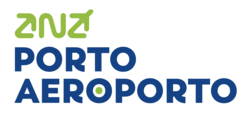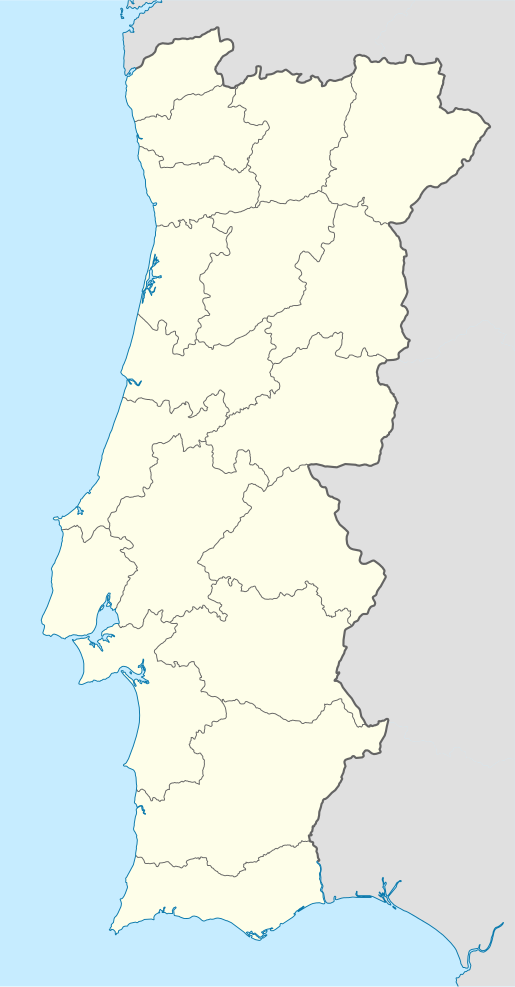Porto Airport
Francisco Sá Carneiro Airport (IATA: OPO, ICAO: LPPR) or simply Porto Airport (formerly Pedras Rubras Airport) is an international airport near Porto (Oporto), Portugal. It is located 11 km (6.8 mi) northwest of the Clérigos Tower in the centre of Porto, in the municipalities of Maia, Matosinhos and Vila do Conde and is run by ANA – Aeroportos de Portugal. The airport is currently the second-busiest in the country, based on aircraft operations; and the second-busiest in passengers, based on Aeroportos de Portugal traffic statistics, after Lisbon Airport and before Faro Airport. The airport is a base for easyJet, Ryanair, TAP Air Portugal and its subsidiary TAP Express.
Francisco Sá Carneiro Airport Aeroporto Sá Carneiro | |||||||||||
|---|---|---|---|---|---|---|---|---|---|---|---|
 | |||||||||||
 | |||||||||||
| Summary | |||||||||||
| Airport type | Public | ||||||||||
| Owner | Vinci Group | ||||||||||
| Operator | ANA Aeroportos de Portugal | ||||||||||
| Serves | Porto, Portugal | ||||||||||
| Location | 11 km (6.8 mi) NW of Porto | ||||||||||
| Opened | 1945 | ||||||||||
| Hub for | TAP Air Portugal | ||||||||||
| Focus city for | |||||||||||
| Elevation AMSL | 69 m / 226 ft | ||||||||||
| Coordinates | 41°14′08″N 008°40′41″W | ||||||||||
| Website | www.aeroportoporto.pt | ||||||||||
| Map | |||||||||||
 LPPR Location in Portugal | |||||||||||
| Runways | |||||||||||
| |||||||||||
| Statistics (2019) | |||||||||||
| |||||||||||
Location
The airport is surrounded by the municipalities of Matosinhos (to the south and west) and Vila do Conde (to the north) and Maia (to the east). It covers the parishes of Santa Cruz do Bispo, Perafita and Lavra (in Matosinhos); Aveleda and Vilar do Pinheiro (Vila do Conde); and Vila Nova da Telha and Moreira (Maia).[1] It includes an area of between 72 metres (236 ft) in the extreme south and 43 metres (141 ft) in the north.[1] The southern portion of the airport intersects the hydrographic watershed of the Leça River, while the north is crossed by effluents of Onda River.[1]
History
The airport around Porto opened in 1945 and was initially known as Pedras Rubras Airport, after the name for the locality where the airport is located: Pedras Rubras ("red rocks"). It is still known by this name in the region.
The land on which the airport was built was originally agricultural, characterised by rich soils that permitted the cultivation of various cereals.[1]
It was renamed in 1990 after former Portuguese prime minister, Francisco de Sá Carneiro, who died in a plane crash when he was traveling to this airport on 4 December 1980.[2]
Along with the airports in Lisbon, Faro, Ponta Delgada, Santa Maria, Horta, Flores, Madeira, and Porto Santo, the airport's concessions to provide support to civil aviation were conceded to ANA Aeroportos de Portugal on 18 December 1998, under provisions of decree 404/98. With this concession, ANA became responsible for the planning, development and construction of future infrastructure.[2]
A new terminal building, designed by Portuguese firm ICQ, was built between 2003 and 2006, and became operational in the last quarter of 2006.[3]
Porto Airport reached ten million passenger per year for the first time on 6 December 2017.
Airlines and destinations
Passenger
The following airlines operate regular scheduled direct passenger flights at Porto Airport:
Cargo
| Airlines | Destinations |
|---|---|
| DHL Aviation | Leipzig/Halle, London-Heathrow, Vitoria |
| Turkish Cargo | Madrid, Istanbul-Atatürk |
| UPS Airlines | Cologne/Bonn, Lisbon |
Statistics
| Rank | Country, airport | Passengers |
|---|---|---|
| 1 | 1.551.594 | |
| 2 | 1.146.427 | |
| 3 | 860.588 | |
| 4 | 808.309 | |
| 5 | 684.405 | |
| 6 | 650.160 | |
| 7 | 448.516 | |
| 8 | 401.914 | |
| 9 | 385.987 | |
| 10 | 383.756 | |
Access
Besides taxi services and the road link, there are several public transportation links available:
Metro
The airport is served by Line E of the Porto Metro. The station has three platforms and the trains leave the arrival platform and reverse into one of the departure platforms.
The service links the airport to Porto city center and by transfer in Trindade station to high-speed trains at Campanhã, and other urban centres of Greater Porto: in Verdes station to Vila do Conde and Póvoa de Varzim (using line B), Fonte do Cuco station to Maia (line C), Senhora da Hora station to Matosinhos (line A), and Trindade station to V.N.Gaia (line D) and to Rio Tinto/Fânzeres (line F).
Car
Sá Carneiro airport is accessible via the A41 and A28 motorways, but also the EN13 highway (using the EN107 accessway). These roadways lead to drop-off and pick-up areas and short and long-stay car parks. It can also be reached by the A4 motorway through the VRI accessway.
Bus
STCP buses also link the airport and the city. There is also a bus that operates all night from Porto city centre to the airport. Also there is a bus service to/from Vigo (Galicia/Spain) twice a day on weekdays, and once a day during the weekend.
Shuttle
The GetBUS shuttle provides 50 min direct connections to the towns of Braga and Guimarães. Tickets can be bought in advance on the shuttle's website.
Accolades
Airports Council International Airport Service Quality Awards voted the airport Best Airport in Europe in 2007. Additionally, it has placed in the top three of Best Airport in Europe a further nine times – winning second place in 2010, and third place in 2006, 2008, 2009, 2011, 2013, 2014, 2015, and 2016.[17][18]
References
Citations
- ANA (January 2007), p.1
- "The history of Porto Airport - Francisco de Sá Carneiro Airport". 1 February 2017.
- "Francisco SA Carneiro (Oporto) Airport Expansion, Porto".
- Liu, Jim (21 August 2019). "easyJet further expands new routes in W19". Routesonline.
- Evelop adds Spain – Portugal links in S18 Routesonline. 4 May 2018.
- Finnair to add three new leisure routes for next summer: Porto, Bologna and Bordeaux news.cision.com 31 October 2018. Retrieved 31 October 2018.
- https://www.routesonline.com/news/38/airlineroute/291487/ryanair-july-october-2020-portugal-operations-as-of-28may20/
- "Grenoble é o novo destino direto da Ryanair no Porto". 24 December 2019. Cite journal requires
|journal=(help) - Liu, Jim. "Ryanair / Laudamotion S20 network consolidation as of 18JUN20". Routesonline. Retrieved 19 June 2020.
- flytap.com - Flight information. 22 August 2019
- Liu, Jim (6 August 2020). "TAP Air Portugal tentatively delays Porto – Ilha do Sal launch to Oct 2020". Routesonline.
- https://www.flytap.com/en-gb/
- "Vueling oferece voos para Tenerife a partir de Junho". aerOPOrto. 19 February 2020.
- https://www.wetravel.biz/2020/05/28/wizzair-nuova-base-a-malpensa/
- Liu, Jim. "Wizz Air expands Vienna network in W19". Routesonline. Retrieved 3 July 2019.
- "Porto Airport voted best in Europe in category of 5 to 15 million passengers" ANA Aeroportos de Portugal Retrieved 2017-06-18
- "Past Winners - Airports Council International" Airports Council International. Retrieved 2014-03-04
Bibliography
- ANA, ed. (January 2007), Plano Director: Aeroporto Francisco Sá Carneiro [Porto] (PDF) (in Portuguese), Porto, Portugal: ANA Aeroportos de Portugal, archived from the original (PDF) on 2 January 2014
External links
![]()